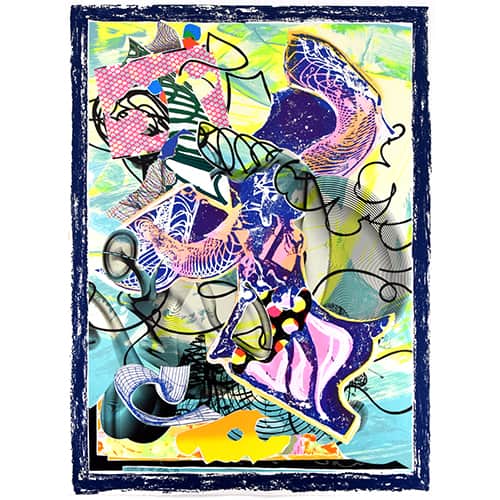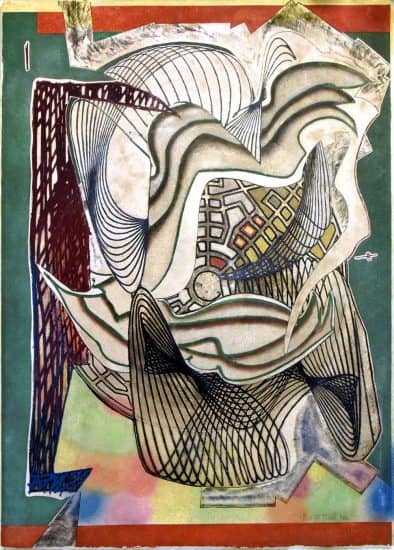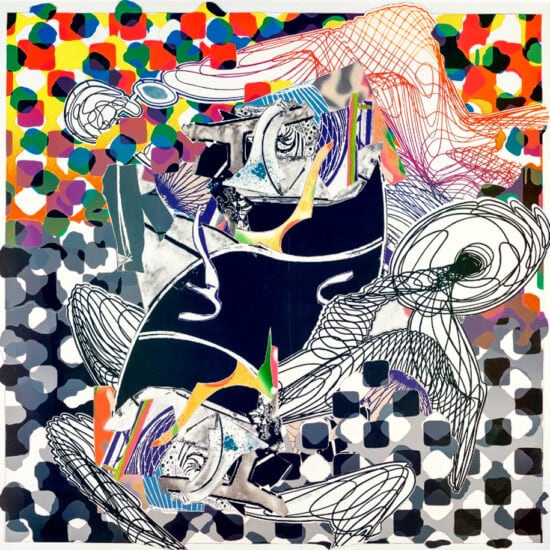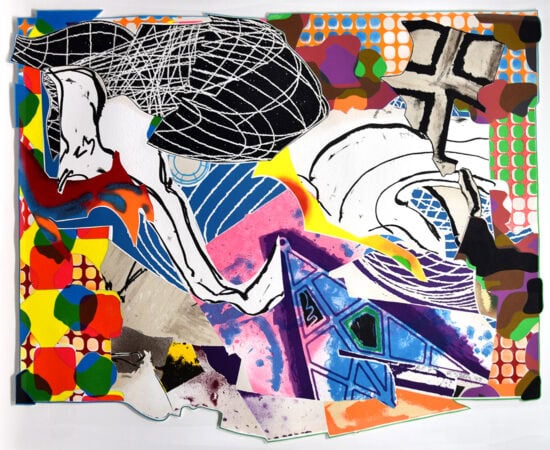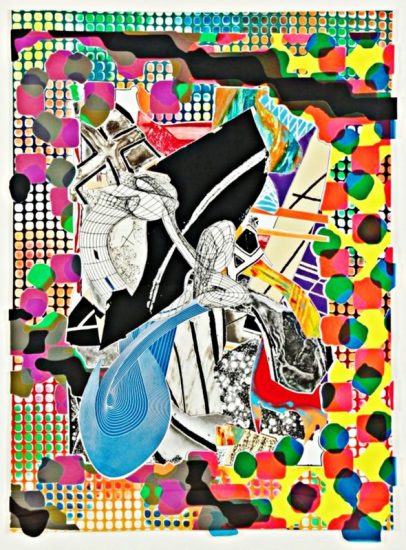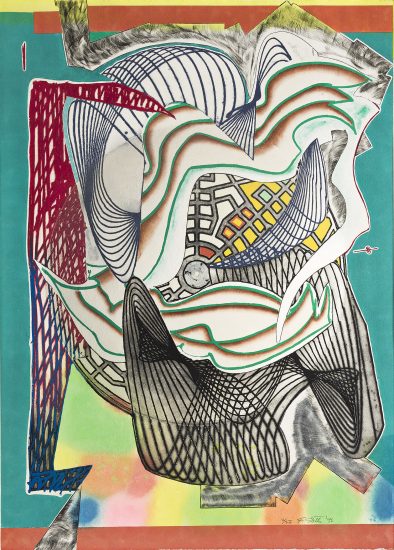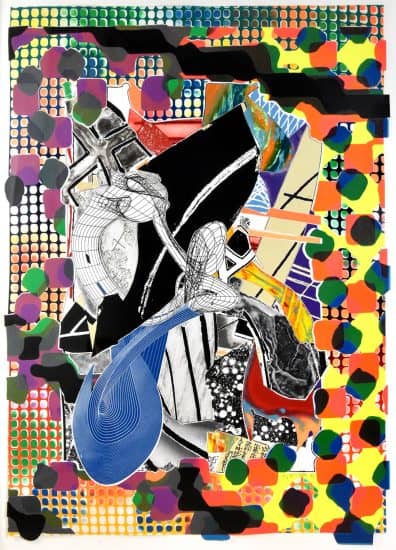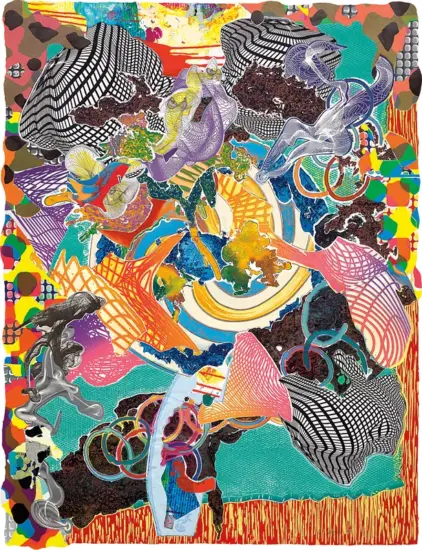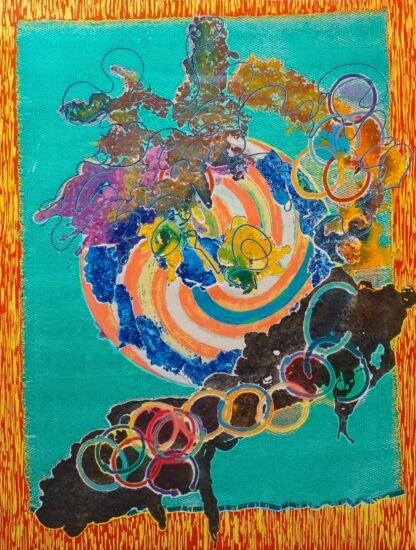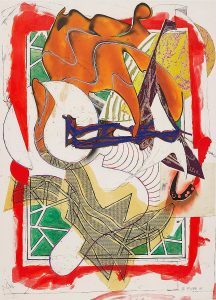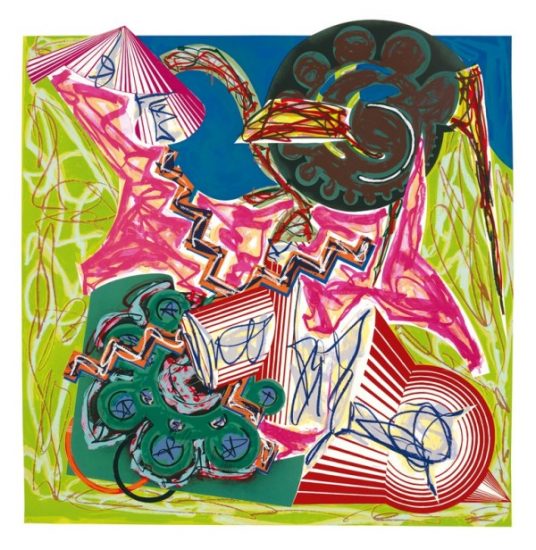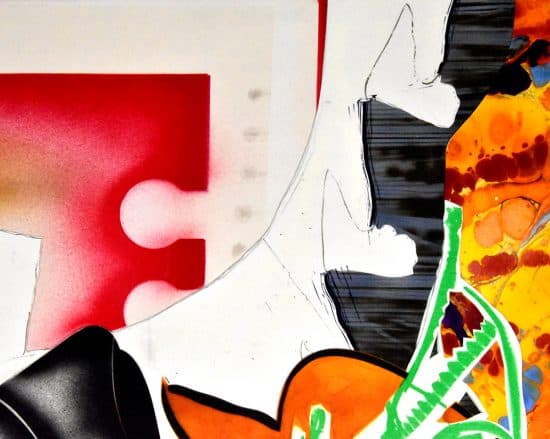Stella Before Moby Dick
Frank Stella is well known for his minimalist style. In his early years as an artist, his austere Black Paintings transformed the way viewers experienced color, form and the environment. Yet, later in his career, Stella’ style drastically evolved into abstraction and three dimensional forms. Between the years 1985 and 1993, Stella produced a vast number of works inspired by Herman Melville’s Moby-Dick.
The works are included within series such as The Waves and Moby Dick Domes. Stella’s fascination with the novel spans various mediums, from collage and print to aluminum sculpture. In total, there are 138 artworks, each corresponding to a chapter within Moby-Dick. Upon first glance, it is clear that these works are a departure from Stella’s beginnings. Often, geometric forms curve and swirl, layered in collage form. The colors are incredibly vibrant and add to the illusion of multiple dimensions.
Moby-Dick and Themes
However, to understand Stella’s works, it is imperative to understand the significance of the Moby-Dick. Melville’s novel details a nautical journey led by Ahab, a one-legged ship captain. Ahab’s main ambition is to kill Moby Dick, the whale who devoured his leg. As such, death, fate and ambition are central themes to the novel. At once, it is possible to imagine the drama that unfolds in this journey. For a more thorough plot analysis of the novel: https://en.wikipedia.org/wiki/Moby-Dick
Stella’s Inspiration
Inspiration for the series is rooted both in respect for his predecessors and his admiration of the book. For instance, Stella has always held the abstract expressionists in high regard. Of these artists, Stella has said “they’re still the generation I admire. This is paying my debt, or not so much paying my debt as expressing my admiration for the abstract generation I grew up with and that I admired the most, and that I still admire (Jones)." Indeed, the swirling colors and abstract shapes of this series harken back to the recognizable style of the abstract expressionists such as Hans Hoffman and Franz Kline.
In Stella's Own Words
Additionally, the drama within the novel played a great part in his vision. In a recent interview, Stella explained “I think the Moby Dick series [1986-1997] is a kind of turning point. I was a little afraid, and probably still am a little, with Moby Dick, but the pictures [are] essentially curved surfaces. They started to really move, and the novel moves; you’re going around the world, it’s pretty wet, there are a lot of waves and motion (Pobric)." In this manner, Stella creates a visual narrative as powerful as its original textual form. Rather than create literal depictions of the chapters, Stella astounds viewers by envisioning the soul of the novel.
Works Cited:
- Jones, Jonathan. "Father of Minimalism, Frank Stella, on Moby Dick." The Guardian. Guardian News and Media, 04 Apr. 2001. Web. 16 Mar. 2016.
- Pobric, Pac. "Frank Stella: A Romantic, after All." Frank Stella: A Romantic, after All. The Art Newspaper, Nov. 2015. Web. 16 Mar. 2016.
We proudly offer these Frank Stella Moby Dick prints for sale from our fine art collection.

